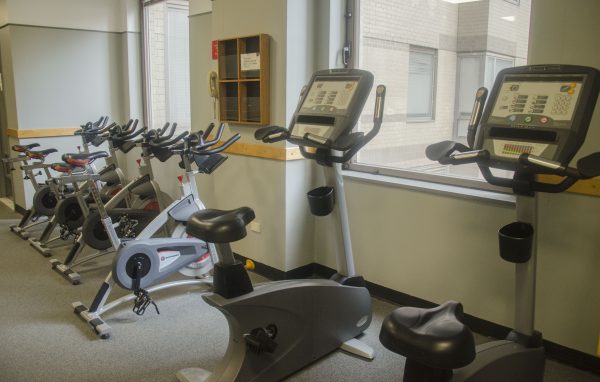Fitness Trackers and You: How Fordham Students Can Walk Into A Healthier
Fitness trackers have taken the world by storm and are becoming more and more sought after by students in particular. (THE OBSERVER)
October 12, 2017
If you have ever uttered the words “I have to get my steps in!”, then you are probably one of many people who has bought into the fitness tracker craze that is growing increasingly popular around the world. Or, perhaps you have noticed a friend’s glowing rubber wristband or sleek Apple watch and thought, “Why?” Before you write off fitness trackers completely or sprint out to buy the most expensive one, hear the facts and weigh your options. These little devices are only growing in popularity and they seem to be positively impacting the lives of more and more college students every day.
Fitness trackers, at their most rudimentary forms, monitor how many steps the wearer takes in a day. The more advanced trackers are able to track calorie intake and expenditure, monitor heart rate and sleep quality, and provide GPS location services. Regardless of the tracker, the goal is that these devices get the user more active than they would have been using a pedometer. Typically the benchmark is set at 10,000 steps throughout the day, before the step count resets again to zero, in preparation for a fresh start the following day. The activity can come from any form of exercise (even walking in place), as long as the tracker is able to pick it up.
The most popular fitness tracker brands are the Fitbit and Apple Watch. However, if you are looking to save money, anyone with an iPhone can track their steps using the “Health” app that has already come programmed into the phone. This app will tell you the steps you have walked (including walking and running distance) and number of flights of stairs you have climbed throughout the course of your day, provided that your phone is being carried with you. This app works for any activity involving step-like motion, from walking to cross-country skiing, and can be helpful in motivating you to get a little extra walking in throughout your day.
Fitness trackers are beneficial for telling users their average amount of activity and therefore can be a good indicator that a person needs more exercise in order to increase their overall health. If used often enough, the wearer can forget that it is there, and slowly, making small decisions to take the stairs instead of the elevator can become unconscious actions that add up in a positive way. Some negatives, however, are that there is no proof that using fitness trackers will lead to much weight loss, and carrying the monitor around can at times be uncomfortable or cumbersome.
Fordham College at Lincoln Center (FCLC) ’19 student, Kara Hogan, has been using a Fitbit since January 2017, and is a believer in its positive impact on her life.
“It really alerted me to how sedentary I was at school […] it made me realize that I should exercise more,” she said. Hogan’s entire family tracks their steps and use their trackers to motivate each other to be more active on a daily basis.
“When I look at the step count, it motivates me more to make the time than if I wasn’t wearing it. I don’t beat myself up if I don’t get 10,000 steps, but I like it as a reminder that I should be striving towards that goal,” she said.
“I think being healthier and being active is a good thing for all people,” Hogan said. “Especially at Fordham Lincoln Center, where we’re on this tiny little campus and it’s so easy to just sit in your room and do your homework all day, I think [my Fitbit] has motivated me to be a more active person.”
As students living in one of the most walkable cities in the world, we all could benefit from taking the stairs in Lowenstein (even if just once or twice a week) or taking a nice walk at the end of a stressful day to explore the city and get a mental break from schoolwork and extracurricular obligations. Fitness is what you make of it, and the key is just making room for healthy decisions in your life, one step at a time.










